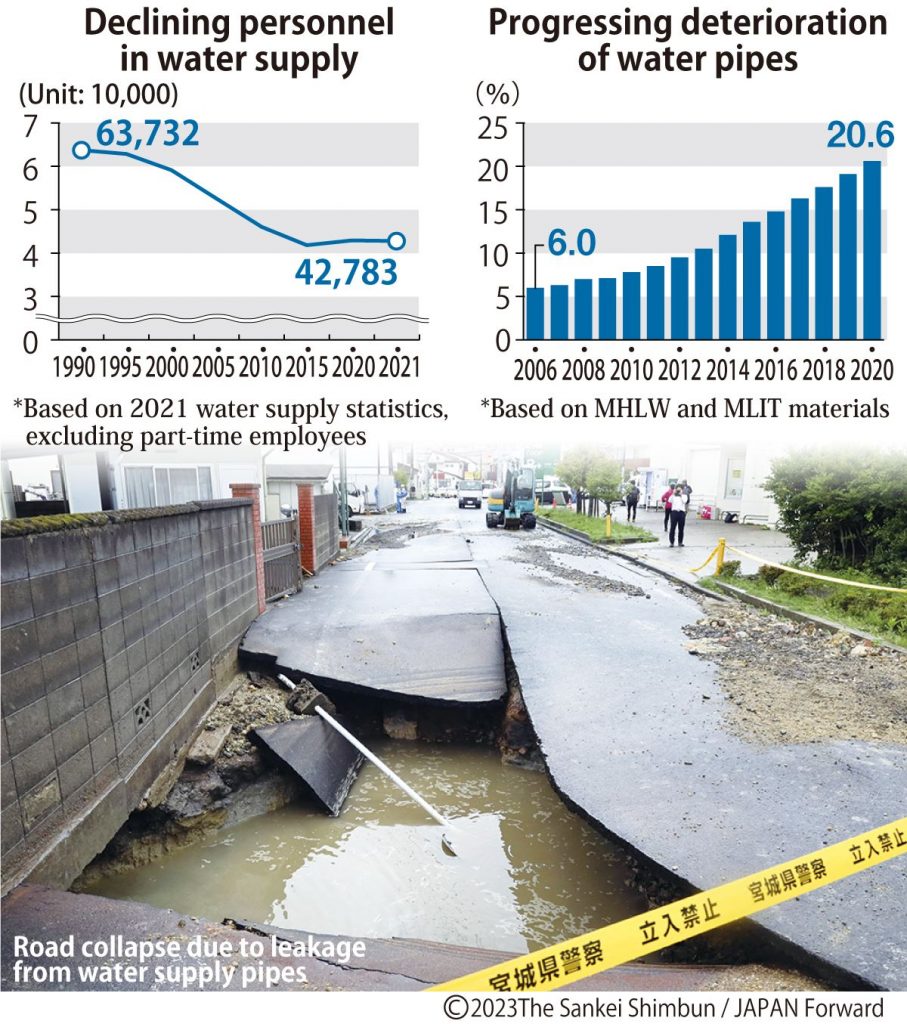
Students at Kurese Elementary School in Okayama Prefecture drinking water from the tap, July 24, 2018. (©Sankei)
Read the full story on Japan 2 Earth - A Turning Point for Japan's Safe and Delicious Tap Water
Come April 2024, the maintenance and management of Japan's tap water supply will transition from the Ministry of Health, Labour and Welfare (MHLW) to the Ministry of Land, Infrastructure, Transport and Tourism (MLIT). Local governments are facing challenges in maintenance due to aging and deteriorating water pipes put in place during the era of rapid economic growth.
The shift to MLIT, responsible for regional development, aims to streamline infrastructure upgrades and bolster disaster preparedness. This transition signifies a crucial moment for Japan's globally recognized water supply industry, celebrated for providing both safe and delicious water.
Aging Pipes
Up to now, MHLW has overseen responsibilities related to the water supply system. Historically as water supply infrastructure advanced, the introduction of chlorine disinfection played a pivotal role in reducing infectious diseases such as cholera and dysentery. The nationwide water supply coverage reached 98.2% in 2021. From a public health standpoint, the ministry has successfully fulfilled its role.

Meanwhile, the current most critical issue facing Japan's water supply is aging infrastructure. According to MHLW, 20.6% or one-fifth of all water pipes had exceeded their mandated service life of 40 years as of 2020. The proportion of water pipes that have undergone reinforcement remains at a mere 0.65% of the overall infrastructure.
Continue reading the full story on Japan 2 Earth to learn more about addressing the challenges facing Japan's water supply system.
And find more great articles on the environment and the challenges of achieving the SDGs on our new website Japan 2 Earth (J2E), sparking a transition to a sustainable future.
RELATED:
- [Road Once Traveled] Japanese City Extends a Helping Hand through Water
- New Technology Uses Point Cloud Data to Reproduce Roads and Public Structures in Virtual Space
(Read the article in Japanese.)
Author: Naoki Otake








